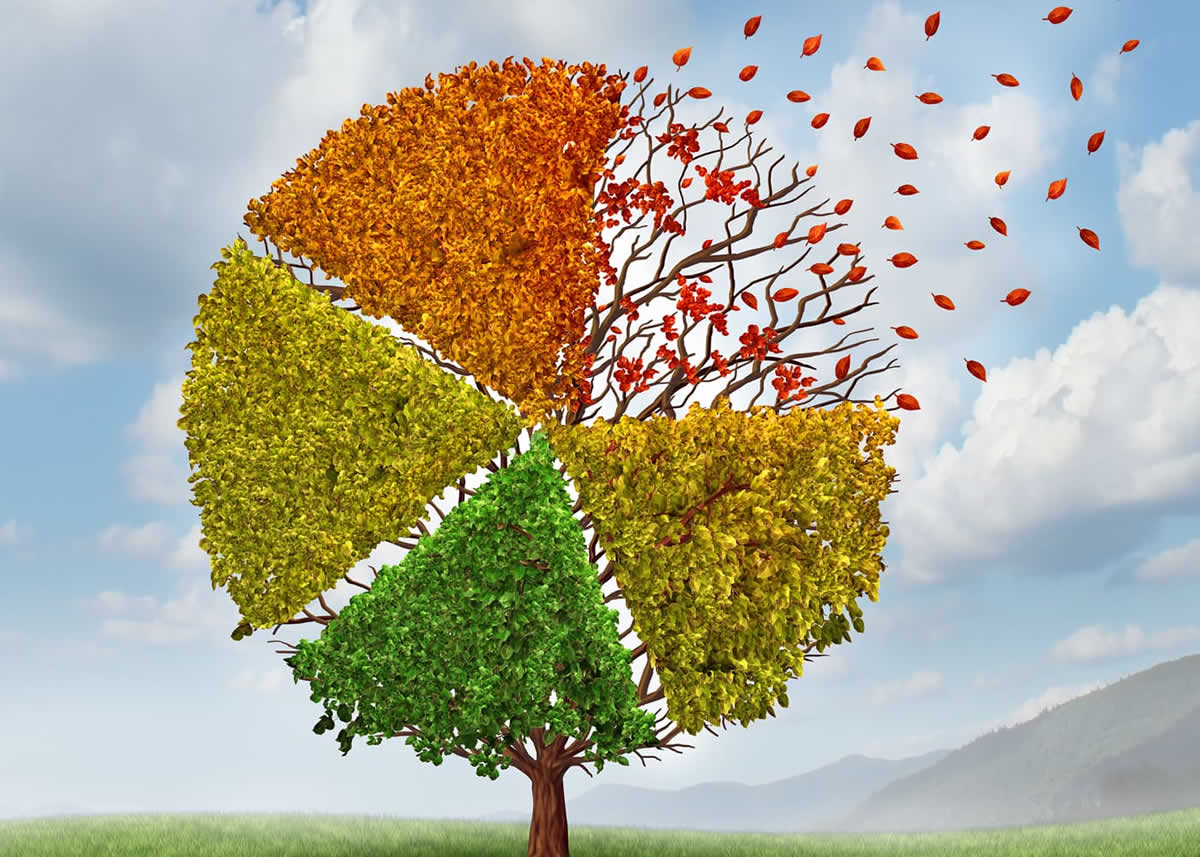It's Time to Quantify the Economic Risks of Climate Change

The Green Tie (GT): Why did you think that there was an opportunity for Next Generation to weigh in on the conversation about climate change? What was missing?
Kate Gordon (KG): We started thinking about this two years ago and talking to Tom Steyer, who is one of the founders of Next Generation, looking at the landscape of people talking about the intersection of climate and the economy. We were finding that even where people or advocates or policymakers were trying to have that conversation, even economists, it was falling fairly quickly into either the partisan fight over "Is the science real" or the partisan fight over "What specific federal policy response should we adopt?"
We thought there was a need for something in the middle to really set a non-partisan, fact-based foundation for talking about what the risks to the economy of climate change might be, and looking at that very much in the mode of how we would look at risks in other areas, like extreme weather, war and terrorism (national security risks). Companies do risk assessment and risk planning all the time on issues where there is a lot of future uncertainty but they're generally sure that something will happen. We thought that this was an area where it would be ideal to do that and it really set the framework for having a business-based conversation about it.
GT: Tom Steyer is well-known for his political contributions. How did you make sure that this effort remained nonpartisan and came at the issue from an empirically risk-based perspective?
KG: Well, one thing I always remind people is that while Tom is very well-known today for his political work, he spent two years at Goldman Sachs and twenty years running one of the most successful hedge funds in this state, if not the country. So he really is a business guy. And when we started our project in this area, he was still at Farallon Capital Management. So he really comes to this project from a very strong and credible business perspective from the financial sector.
We also recruited a bipartisan leadership team comprising Michael Bloomberg, who has a lot of experience working on dealing with climate risk in the City of New York, and Hank Paulsen, who, of course is a Republican who has a lot of experience dealing with financial meltdowns and financial risk. Those three together were involved early on and were the intellectual partners and the front messengers on this project.
We then structured the project to include a bipartisan group of seven more people, all from sectors or industries or economic perspectives related to the risk approach, and to the sectors we were studying. Additionally, we worked with independent researchers from Rhodium Group, which has a lot of experience working on both sides of the aisle, and that itself had a peer-review group of about 15 academics. So we've structured the whole thing to be very independent and very nonpartisan.
GT: How did you scope the risks? Were you trying to evaluate the impact of climate change on the economy generally, or did you frame it in terms of length of time, or specific segments?
KG: We took a very multidisciplinary approach to the analysis by bringing together climate scientists, economists and integrated modeling people for the first time on this issue. Altogether we used 20 terabytes of data on this project: That's 300,000 computers worth of data, so it was very much a big data project.
We knew that we wanted to have actionable data and that meant that we needed to have very granular data by sector and by area of the country. You can't the United States as a whole when it comes to climate risk; it's a very big and diverse country and companies don't look at it as a whole. Companies don't actually tend to plan around GDP; they tend to plan around specific sector impacts.
There's a lot of very good climate science data available, particularly around heat impacts and sea level rise and we looked at that and aggregated 40 different climate models for this project. But looking at the economic data and looking at what we know about the cost implications of those climate change events - of extreme heat, of sea level rise, of precipitation - we chose sectors where that data was readily available.
So we purposefully focused on agriculture (the big commodity crops), energy demand and coastal property because all three are areas where the industries have aggregated an enormous amount of data about impacts. We were able to take quantitative information about what happens to those industries in various regions of the country when these climate impacts occur. We also did a couple of overarching areas: heat-related mortality and labor productivity.
It's important for people to know that this is not an economy-wide study; it was a U.S. wide [analysis] but it was very specific to various sectors and in that it's really a start. It's the beginning of a conversation about what this means for companies.
GT: So it sounds like this analysis was a very holistic look at the full spectrum of risks. What were some of the surprises? Were there some unexpected insights even for those who are so familiar with this issue?
KG: Just as most business decisions are local, we learned that climate change impacts are extremely local. Aggregating to a national level in the United States when it comes to climate risk, either using GDP numbers or even aggregated impacts to specific industries is a really bad idea.
Just because it's local, however, doesn't mean we don't need a national response. Right now what we're find is individual companies and cities and affected people doing a lot of spending to deal with potential future impacts within a system that doesn't have a policy that works to minimize those impacts. I think that's important because we need the people dealing with this to translate those local impacts into a call for a national response. That's ultimately what will bring certainty. Absent that, what you get is massive spending on emergency response and that's just not the way you plan an economy or plan a business.
We also have to begin preparing for the impact climate change will have on energy demand. Because of increased heat throughout most of the southern part of the country, we will see increased demand for air conditioning and also for cooling in industrial plants. That will put a big strain on the energy infrastructure, which means we'll have to build 95 gigawatts more energy capacity nationally in the next 25 years. That's the equivalent of about 200 power plants. That's important because it's the type of thing that utilities have to think about and businesses have to think about, especially energy-intensive businesses looking into the future.
GT: What advice do you have for someone who might be interested in starting this conversation within their own company?
KG: I think that businesses have to stop thinking about this as just a board room conversation or just a sustainability office conversation. They need to think about where their limits are to their own ability to adapt and mitigate risk, where the public sector does have a role. Ultimately, what U.S. business is facing is constant adaptation and resilience and spending unless we have an actual response at the policy level. And there does need to be a mainstream business voice in that policy conversation.
We also need to take away this false dichotomy that there's a particular role for adaptation and there's other people to work on mitigation. It's a continuum. What we find when you look at the risks to these different sectors is that some of them are very short-term because they have already been baked into the economy. The storm surge of Hurricane Sandy, for example, was the result of sea level rise, which was the result of business decisions 30-40 years ago. This isn't something we can change. So you have to think about adaptation. You also have to be thinking today about how you're building for the future and you have to be thinking about resilience for the future.
And finally, we have to get off the path we're on. At some point you can't just continue to plan for the path you're on and not change that path. That's not risk management. We should be actively trying to change that path.
To learn more about the Risky Business report, please visit riskybusiness.org. To join fellow EHS and sustainability leaders for conversations about climate risk, visit naem.org/conferences.
About the Author

NAEM Staff
The National Association for Environmental, Health and Safety, and Sustainability (EHS&S) Management (NAEM) empowers corporate leaders to advance environmental stewardship, create safe and healthy workplaces and promote global sustainability. As the
leading business community for EHS&S decision-makers, we provide engaging forums, a curated network, peer benchmarking, research insights and tools for solving today’s corporate EHS&S management challenges. Visit us online at naem.org.

